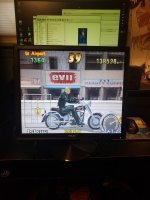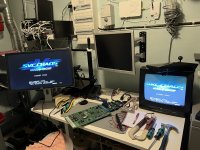I see people make this mistake all the time, but the 1ms on the Asus monitor you're referring to is not the input lag of the monitor, it's the estimated time it takes for a pixel to change color (grey to grey). It's a largely meaningless marketing stat (a similar marketing stat would be LCD monitors/TVs that claim 1,000,000+:1 contrast ratio). A realistic number from that era of gaming monitor would be more like 10-14ms of lag instead of 1ms.
Real lag numbers are almost never stated (some companies have recently begun to explicitly state low input lag modes or features, but still dont give numbers), and usually obtained with testing with varying degrees of accuracy, usually with something like a Leo Bodnar tester, Time Sleuth, or a modded OSSC. Some sites like displaylag.com, rtings.com, and tftcentral.co.uk test for lag when they review a display. The website inputlag.science has some decent info on this subject.
Real lag numbers are almost never stated (some companies have recently begun to explicitly state low input lag modes or features, but still dont give numbers), and usually obtained with testing with varying degrees of accuracy, usually with something like a Leo Bodnar tester, Time Sleuth, or a modded OSSC. Some sites like displaylag.com, rtings.com, and tftcentral.co.uk test for lag when they review a display. The website inputlag.science has some decent info on this subject.


